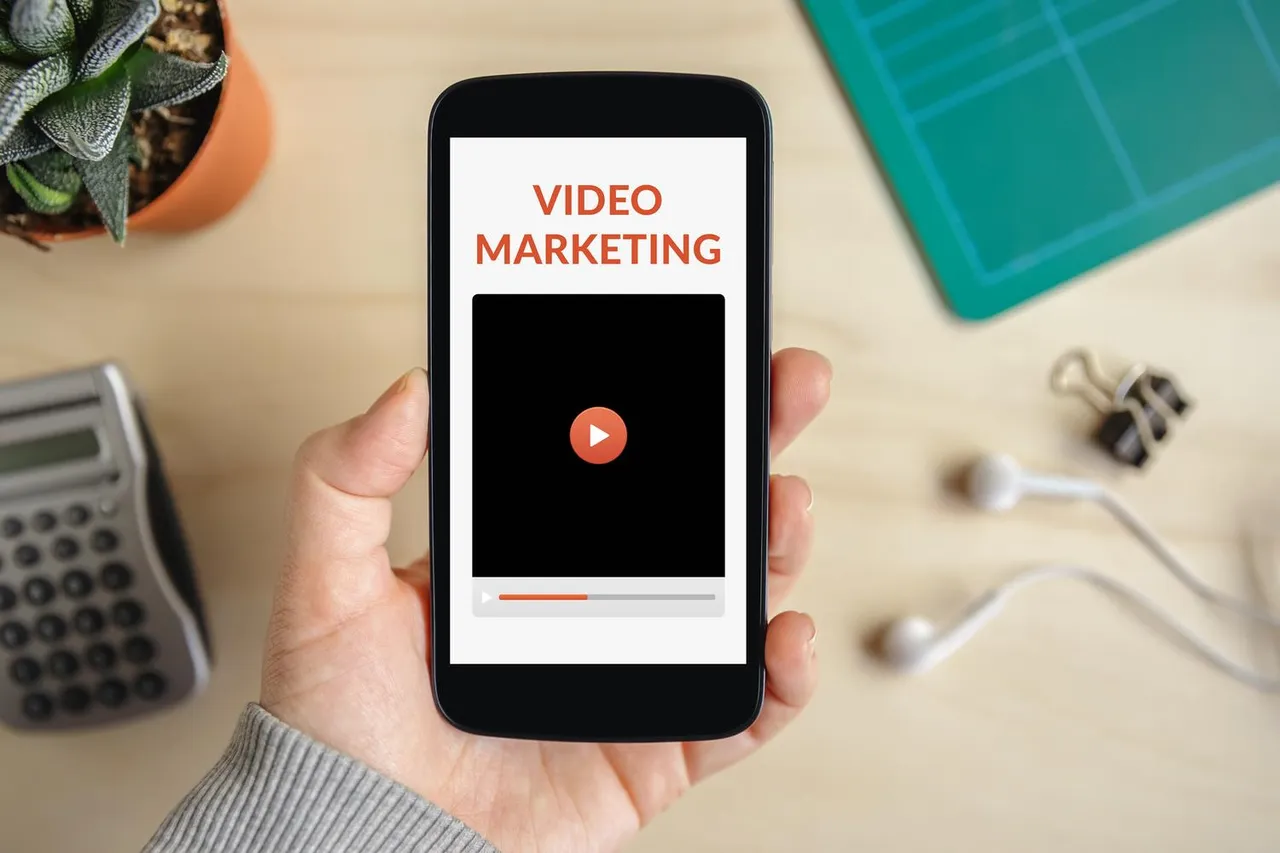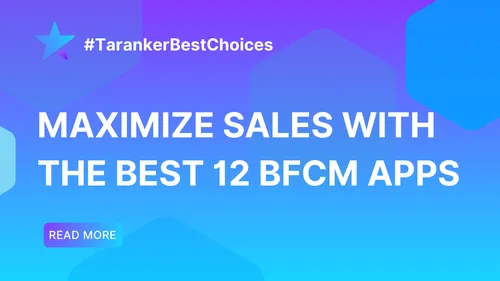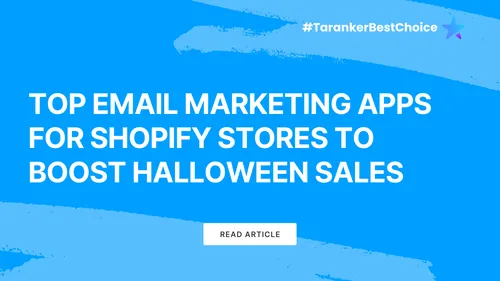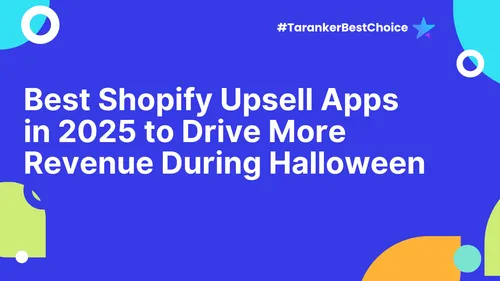Introduction
Video marketing has come a long way from the days of expensive TV commercials and corporate promotional tapes. In today’s digital world, video has become the heartbeat of modern marketing strategies, especially for e-commerce businesses like those on Shopify. The journey of video marketing reflects not only technological advancements but also changing consumer behavior and the demand for more engaging, authentic content.
As we look ahead, video marketing continues to evolve rapidly, driven by new platforms, AI technology, and shifting audience expectations. For Shopify merchants, understanding where video marketing has been—and where it's headed—is essential to staying competitive, capturing attention, and driving growth.
In this blog, we’ll explore: ✔ The history and transformation of video marketing
✔ Key trends shaping video content today
✔ How consumer behavior is influencing video strategies
✔ What e-commerce businesses can expect in the future
✔ Actionable tips to future-proof your Shopify video marketing approach
1. A Brief History: From Traditional Broadcast to Digital Domination

a) The Era of TV and Big-Budget Commercials
In the late 20th century, video marketing was dominated by television. Only large corporations could afford high-production ads aired to mass audiences.
✔ One-way communication — brands spoke, consumers listened
✔ Success measured by reach, not engagement
✔ No real-time feedback or data-driven insights
This approach worked when attention was centralized on a few media outlets, but it lacked personalization and interaction.
b) The Shift to Online Video Platforms
The early 2000s marked a turning point with the rise of platforms like YouTube (launched in 2005). Suddenly, video creation and distribution were democratized.
✔ Small businesses gained access to global audiences
✔ Content became searchable and shareable
✔ Viral marketing emerged as a powerful phenomenon
E-commerce brands began using product demos, tutorials, and customer testimonials to connect with consumers in more meaningful ways.
2. The Current State of Video Marketing: 2024–2025

a) The Explosion of Short-Form Video
Apps like TikTok, Instagram Reels, and YouTube Shorts have redefined how brands engage audiences. Bite-sized, engaging videos dominate user feeds.
✔ Attention spans are shorter—videos under 60 seconds perform best
✔ Authenticity trumps polished production
✔ Trends, challenges, and user-generated content (UGC) fuel engagement
For Shopify merchants, short-form videos are a gateway to viral exposure and organic traffic.
b) Multi-Platform Storytelling
Consumers interact with brands across multiple platforms daily. Modern video marketing strategies integrate:
✔ Social media videos
✔ Website-embedded content
✔ Email marketing videos
✔ Paid video ads
This omnichannel approach ensures consistent messaging and maximizes visibility.
c) Data-Driven Personalization
With advanced analytics, brands now tailor video content based on viewer behavior.
✔ Dynamic video ads personalized to customer interests
✔ Retargeting campaigns using video creatives
✔ A/B testing video formats for optimal performance
Apps like Klaviyo and Facebook Ads Manager make it easier for Shopify merchants to implement personalized video strategies.
3. How Consumer Behavior Is Shaping Video Marketing

a) Demand for Authenticity
Modern consumers, especially Gen Z and Millennials, prefer brands that feel real and relatable.
✔ Behind-the-scenes content and founder stories resonate
✔ Influencer partnerships and UGC outperform corporate-style videos
✔ Imperfect, smartphone-shot videos often drive higher engagement
b) Mobile-First Consumption
Over 75% of video content is viewed on mobile devices.
✔ Vertical video formats are now standard
✔ Captions are essential as most videos are watched without sound
✔ Fast-loading, optimized videos improve user experience and SEO
Shopify merchants must ensure their video content is mobile-friendly across all touchpoints.
c) Interactive and Shoppable Videos
Consumers no longer just watch—they interact.
✔ Shoppable videos allow viewers to click and buy directly
✔ Live streaming with real-time purchasing options is booming
✔ Polls, quizzes, and clickable elements enhance engagement
📌 Example: Shopify's integration with apps like Vimeo Create and Livescale enables interactive shopping experiences.
4. The Future of Video Marketing

a) AI-Generated Video Content
Artificial Intelligence is set to revolutionize video creation.
✔ Automated video editing and personalization at scale
✔ AI-driven scripts and voiceovers
✔ Predictive analytics to forecast video performance
This will make high-quality video production faster and more affordable for Shopify merchants.
b) Augmented Reality (AR) and Virtual Reality (VR) Integration
Immersive experiences will redefine customer engagement.
✔ AR try-ons for fashion, accessories, and home decor
✔ Virtual showrooms and product explorations
✔ Enhanced storytelling through interactive 3D videos
Shopify is already supporting AR through product page integrations, setting the stage for wider adoption.
c) Hyper-Personalized Video Messaging
Imagine sending each customer a personalized video showcasing products tailored to their preferences.
✔ One-to-one video marketing at scale
✔ Dynamic content adapting to real-time user behavior
✔ Enhanced customer retention through personalized experiences
d) Sustainability and Ethical Storytelling
Consumers are becoming more conscious of the brands they support.
✔ Videos highlighting sustainable practices, fair trade, and ethical sourcing will gain traction
✔ Transparent storytelling will be key to building trust and loyalty
5. How Shopify Merchants Can Stay Ahead
a) Invest in Consistent Video Content Creation
✔ Use tools like Canva Pro, InShot, and Animoto for easy editing
✔ Batch-produce content to maintain a steady flow
✔ Repurpose long-form videos into shorter clips for multiple platforms
b) Leverage Shoppable Video Features
✔ Embed product videos directly on Shopify product pages
✔ Use interactive video apps to boost conversions
✔ Incorporate video into email marketing campaigns
c) Collaborate with Micro-Influencers
✔ Partner with creators who align with your brand values
✔ Focus on authenticity and niche audiences over follower count
✔ Encourage influencers to produce relatable, story-driven content
d) Monitor Trends and Be Agile
✔ Stay updated on platform algorithm changes
✔ Experiment with new video formats like live shopping or AR filters
✔ Use analytics to pivot strategies quickly based on performance
Conclusion
The evolution of video marketing reflects a broader shift towards human-centered, interactive, and data-driven brand communication. As we look to the future, video will continue to dominate as the preferred medium for consumers—and a critical growth driver for businesses.
For Shopify merchants, the message is clear: Embrace video marketing not just as a tactic, but as a core part of your brand strategy. Those who adapt to emerging trends and technologies will captivate audiences, foster deeper connections, and accelerate their business growth.
💡 Action Step: Start integrating video into every stage of your customer journey—awareness, consideration, decision, and retention. Whether it's a 15-second reel or a detailed product demo, every video brings you closer to your audience.













